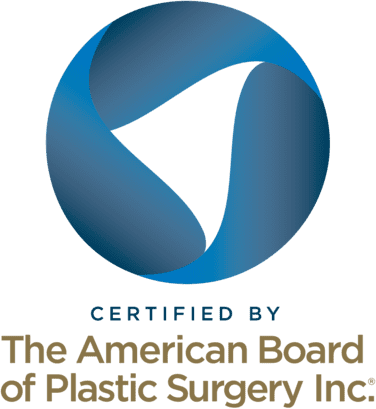Estrogen: For Trans Women, Transfeminine, Non-Binary, and Gender-Expansive Folks
This page is intended to be an informational resource only. The information on this page is not meant to be a substitute for professional medical advice from your primary care physician or endocrinologist. If you are interested in going on estrogen, please consult with licensed medical health experts. Our doctors is not an endocrinologist and can’t prescribe estrogen or testosterone blockers.
Estrogen is used as a form of hormone replacement therapy (HRT) to subdue secondary sex characteristics associated with being assigned male at birth and going through an androgenic puberty. Estrogen therapy can stimulate ‘feminization,’ often including breast growth, body fat redistribution, body and facial hair suppression, and a slowing and stopping of baldness on the scalp. Trans women, as well as transfeminine, non-binary, and gender-expansive people sometimes seek cross-sex hormone therapy (e.g. taking estrogen) to treat and alleviate feelings of gender dysphoria or discomfort associated with having ‘male’ or ‘masculine’ secondary sex characteristics. Some people feel that taking estrogen can improve their physical and psychological health as they develop characteristics that are more congruent with their gender identity. See our page on testosterone to learn about masculinizing hormone therapy, and see our page on microdosing estrogen to learn more about microdosing.
Estrogen, when prescribed, is also referred to as estradiol. For the purposes of this article, the word estrogen will be used as a synonym for estradiol.
Feminizing HRT often involves an additional prescription for an androgen blocker (sometimes referred to as ‘testosterone blockers,’ ‘T blockers,’ or just ‘blockers’). Blockers lower testosterone levels, which can help maximize the impact that estrogen has on the body. Endocrinologists can help figure out the right combination and dosage of estrogen and blockers to best fit any individual’s needs.
Much of the information in this article was informed by UCSF’s Guide to Feminizing Hormone Therapy.
How to Get Estrogen as a Trans or Gender-Expansive Person
The process for getting a prescription for estrogen depends on where you live and your access to mental and medical healthcare. Many trans, non-binary, and gender expansive folks might want to take their time contemplating whether or not hormone therapy would be a good fit for them.
Is estrogen right for me?
The first step is deciding if taking estrogen is right for you. There are many trans, non-binary, and gender-expansive folks who decide that hormone therapy is not right for them. Read on to learn more about the effects that feminizing HRT can have, and take some time to learn about what changes are permanent and impermanent. Familiarizing yourself with the reversible and irreversible effects of estradiol and related hormone treatments, as well as the common timeline for changes, can be a great place to start. Patients who are interested in having some of the changes that testosterone brings, but would like them to occur at a slower pace, can ask their provider about microdosing estrogen as an alternative.
The process for obtaining HRT can seem a little daunting at first. At this time, we do not provide any form of hormone therapy at the Gender Confirmation Center (GCC). However, patients can search for gender-competent HRT providers in the following directories:
- Plume and Folx Health: both online, telehealth providers of HRT and other healthcare services for trans, non-binary, and gender expansive folks.
- WPATH: search “Endocrinology”
- LGBTQ+ Healthcare Directory: search “Gender Affirming Hormone Therapy”
- Southern Equality: for providers in the US South, search “Endocrinology”
- Outcare: search “Endocrinology”
Please note that providers may have different requirements for patient eligibility. For some adult patients, they only need to undergo an informed consent process wherein after being educated about the effects and risks of HRT, they can decide whether or not they want to initiate treatment. Other healthcare or insurance providers may ask you to provide a letter of support from a licensed mental health professional to start your treatment and/or provide insurance coverage for it.
Types of Estrogen Used in HRT
There are a couple of different ways that people can take estrogen. Estrogen can be prescribed as a pill, injection, or a variety of skin preparations (e.g., cream, patch, spray, or gel). Our page on microdosing estrogen has more information about the benefits and reasons why some trans, non-binary, and gender-expansive people choose to stay on low doses of estrogen and testosterone blockers.
Injections: If you are prescribed estrogen injections, your estrogen will come in liquid form. You will also be given a prescription for syringes and needles and will be instructed to do your injections either subcutaneously (just below the skin) or intramuscularly (into the muscle). Commonly, injections happen weekly at low doses or every two weeks at higher doses. Estradiol cypionate and estradiol valerate are both methods of injectable estrogen that can be prescribed. Doses for estradiol cypionate range from 2mg every two weeks to 5mg every two weeks, and doses for estradiol valerate range from 20 to 40mg every two weeks.
Pills: Estrogen pills will likely come as little blue/green dissolvable tablets, pictured above. It is best to allow the pills to dissolve slowly in your mouth, either sublingually (under the tongue) or buccally (between the lips and gums). Estrogen pills are usually taken every day, sometimes multiple times per day. Doses for pills range from 1mg to 8mg daily.
Skin preparations: This form of estrogen is called transdermal application. These forms of estrogen are less common–and in some circumstances less effective–because patches and creams can cause skin irritation and because it can take longer for estrogen to enter the bloodstream transdermally. Doses for transdermal estrogen range from 50 to 400 mcg. Different brands and types have different instructions for using and changing products.
Types of Anti-Androgens (Testosterone Blockers)
Some doctors only ask their patients to take blockers when they are first starting estrogen, while others ask their patients to be on testosterone blockers throughout the entire course of their feminizing hormone regimen. This can depend on factors such as the patient’s HRT goals, needs, lifestyle, and medical history. As with starting any new medication, an honest and open conversation with a medical professional is recommended in order to find out what method and dose of estrogen and testosterone blockers will be best for you. There are two main classifications of testosterone blockers.
Spironolactone: Colloquially known as Spiro, this is the most commonly prescribed method for blocking testosterone in the United States because of its ability to inhibit testosterone synthesis. Doses can range from 25mg daily to 200mg daily or more. This medication is a diuretic and can have negative side effects such as dizziness, dry mouth, headaches, and drowsiness.
5-alpha reductase inhibitors: Two medications, finasteride and dutasteride, fit into this category. These medications are prescribed less frequently because they do not block the production of testosterone and are therefore seen as less effective anti-androgens. These are mainly used with people who have contraindications (a situation in which a specific medication may be harmful to someone) or general intolerance for spironolactone.
Changes to Expect During Feminizing Hormone Therapy
The changes to be expected when taking estrogen and testosterone blockers can be placed into three categories: reversible, permanent, and possibly permanent. Unlike the changes that accompany testosterone use, the majority of the changes that happen when doing feminizing hormone therapy are reversible.
The permanent change that will not regress if estrogen use is stopped is breast growth.
The possibly permanent changes that may regress (depending on individual circumstances like length of estrogen use and dosage) if estrogen is stopped are a reduction or an end to sperm production and a reduction in the size and volume of the testicles.
These changes are reversible, meaning that are likely to regress if estrogen is stopped: thinning or slowing of growth of body and facial hair, softening and decrease in the oiliness of skin, body fat redistribution to a more feminine pattern (around the hips/waist and thighs/buttocks), decreased muscle mass and strength, decreased sex drive (libido), decrease in spontaneous erections, and a stopping of male pattern balding (loss of hair stops).
Some trans people on estrogen experience a hormonal cycle after being on estrogen for a longer period of time. This experience varies from person to person. Sometimes people will feel “moody” or “emotional,” and other people might feel an increase or decrease in appetite or libido. Because these shifts can be cyclical, it is recommended that people monitor their mental/emotional and physical health while on estrogen and talk with a mental or medical health expert if these shifts start to impact quality of life.
Everyone experiences these changes differently, at different paces and rates, and there is no way to pick and choose which changes you want to happen. However, at lower doses, taking estrogen brings on these changes much more slowly and over a longer period of time. To learn more about these changes, view Whitman-Walker’s Trans Resource Guide.
Timeline of Changes to Expect When Taking Estrogen
The information for this section comes from Whitman-Walker’s Trans Resource Guide.
1-3 months after starting estrogen:
- “Male”-pattern balding stops (no hair regrowth, but hair loss stops); maximum results around 1-2 years
- Decreased spontaneous erections; maximum results around 3-6 months
- Decreased libido; maximum results around 1-2 years
3-6 months after starting estrogen:
- Breast growth; maximum results around 2-3 years
- Decreased muscle mass and strength; maximum results around 1-2 years
- Body fat redistribution to a more “female” or feminine pattern; maximum results around 2-5 years
- Softening of the skin; maximum results vary
- Decreased testicular volume and size; maximum results around 2-3 years
6-12 months after starting estrogen
- Thinning and slowing of growth of facial and body hair; maximum results around 3+ years
In Summary
- Estrogen, accompanied by testosterone blockers, has the potential to relieve feelings of gender dysphoria or discomfort in trans women as well as feminine spectrum non-binary and gender-expansive people.
- While the steps for accessing estrogen may vary for folks in different places, generally people need a diagnosis of gender dysphoria by a licensed mental health provider before getting a prescription.
- There are different forms of estrogen and different doses that can be prescribed. It’s a best practice to consult with your primary care doctor or endocrinologist to find a method and dose that works best for you.
- The changes that happen when trans folks are on estrogen for HRT vary, happen over a period of months and years, and are different for everyone.




